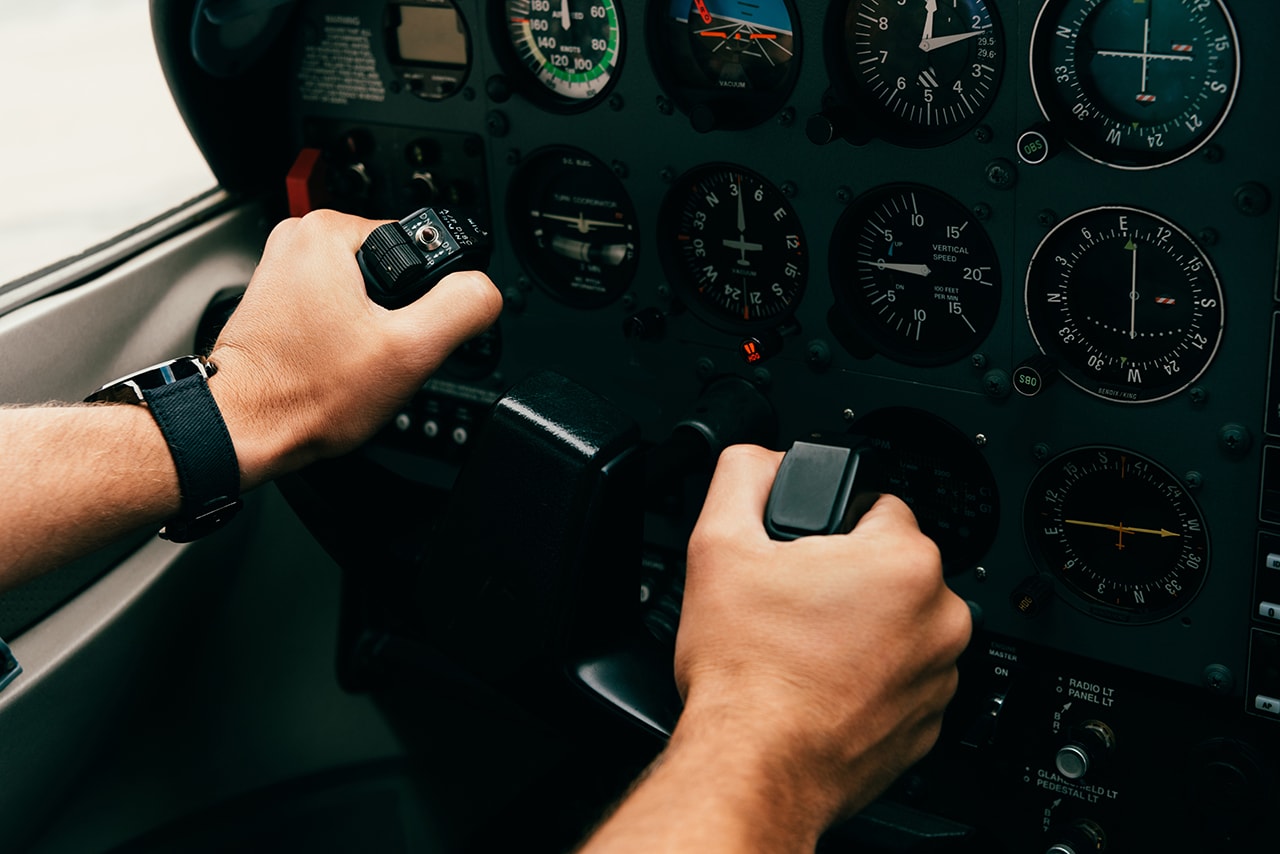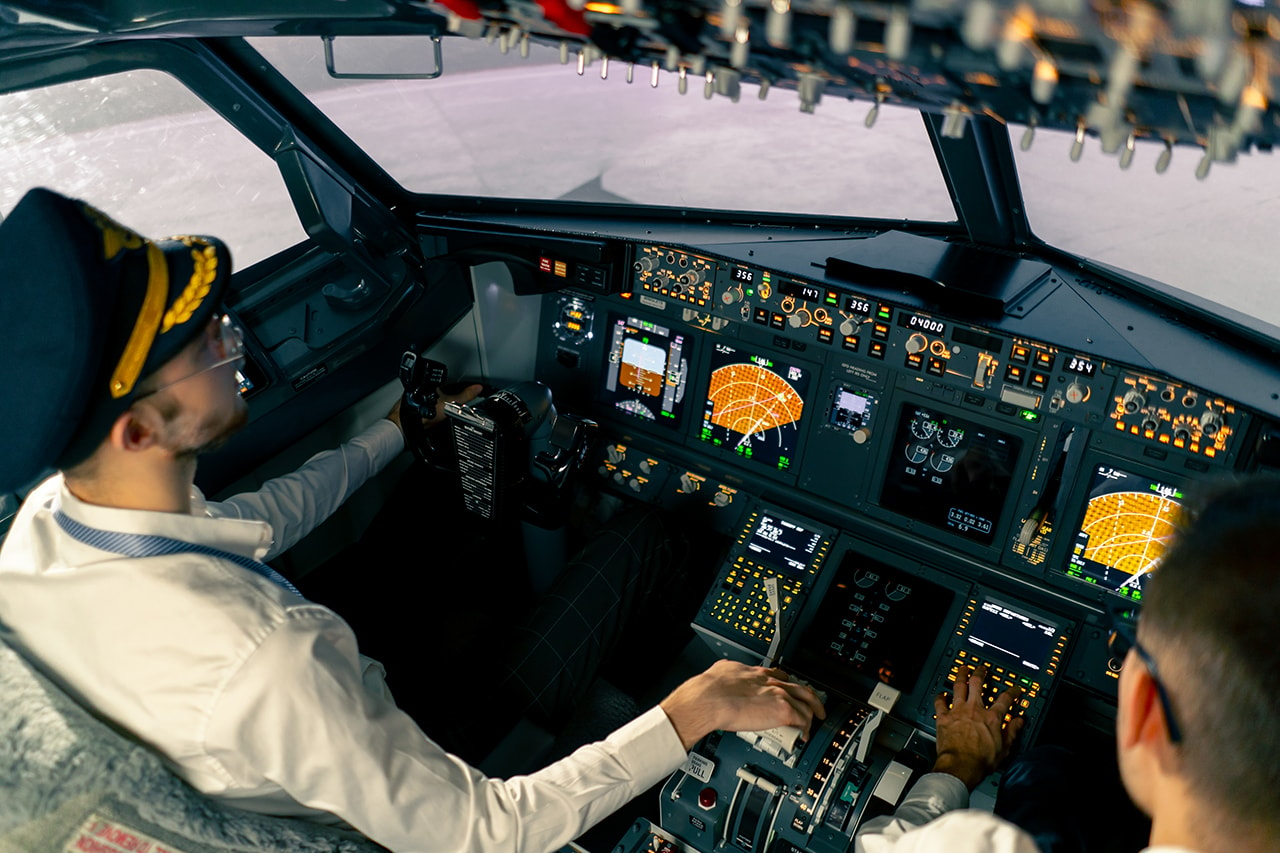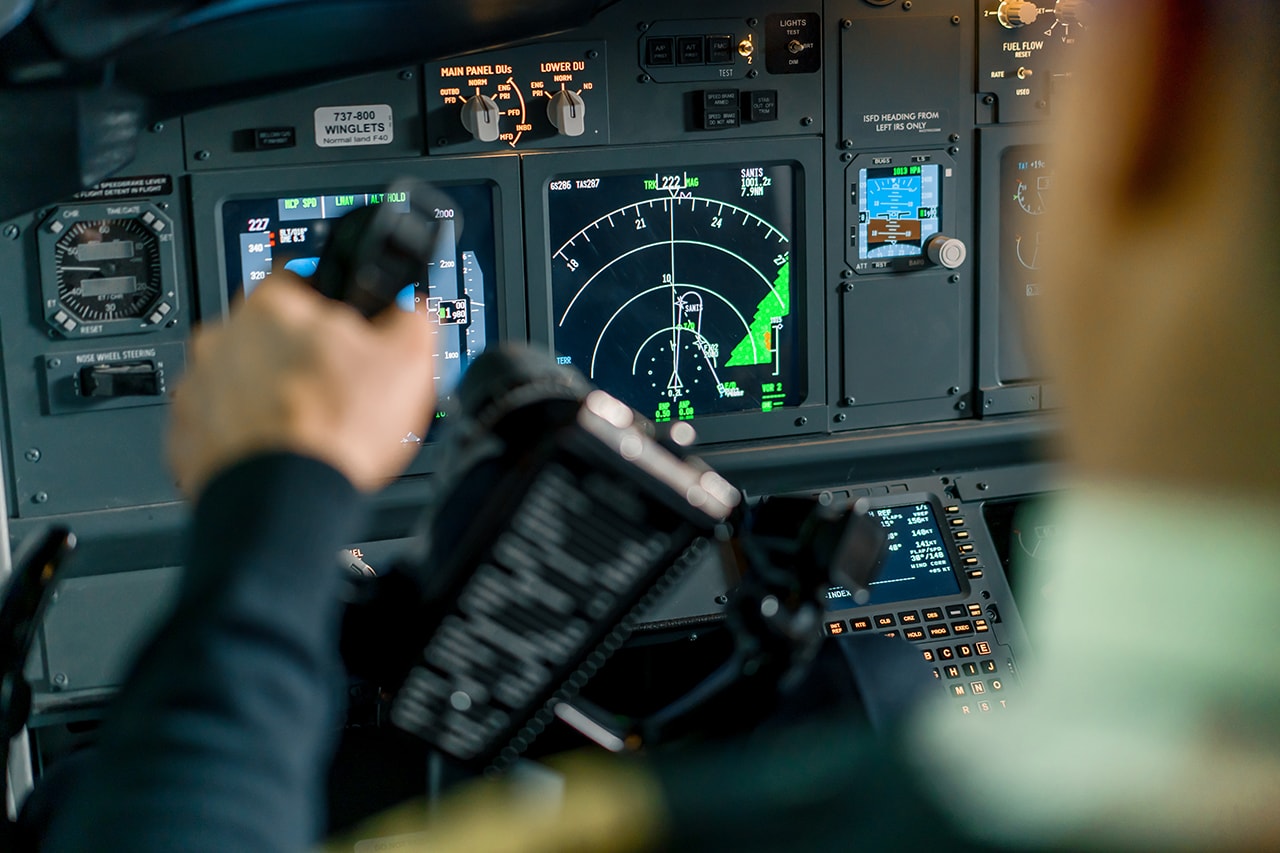Comprehensive Guide to Part 135 Pilot Requirements
Jul 07, 2025
Want to know what Part 135 pilot requirements are? In this post we’ll cover the certifications, flight experience, medical standards and training you need to meet to be a Part 135 pilot.
Key Takeaways
-
Part 135 operations are heavily regulated for pilot qualifications to ensure safety and professionalism in commuter and on-demand flying.
-
Pilots must meet comprehensive certification and experience requirements including 500 hours and specific medical standards to fly under Part 135.
-
Good training and record keeping are key to operational efficiency, safety and compliance in Part 135 flying.
Overview of Part 135 Operations
Part 135 operations are the bread and butter of commuter and on demand air carrier services (with 'on demand operations' referring to regulatory and certification procedures for air carriers, including requirements for registration, insurance, and compliance with FAA and DOT regulations), providing the lifeline for carrying passengers and cargo.
These operations are broken into two or more: commuter and on demand, each with its own set of rules to ensure safety and reliability.
For both commuter and on demand operations, there may be operational limitations or criteria related to routing flights between two or more points, which can affect scheduling and the scope of authorized services.
Commuter operations are scheduled flights with a maximum of 9 seats, on demand can have up to 30 passengers per aircraft, more flexibility within the same category including charter flights that do not follow a published flight schedule.
Part 135 operators have stricter pilot qualification standards than non commercial operations. These standards are much more stringent to ensure the highest level of safety and competence, professional behavior on every flight.
Each role from pilot in command to operational control is defined and regulated, so here we go.
Pilot Certification Requirements for Part 135
To become a Part 135 pilot you need to get the right category certifications. At a minimum you need:
-
A pilot's certificate with the category and class ratings for the aircraft you want to fly.
-
An airline transport pilot certificate if you want to command Part 135 operations, because of the added responsibility and expertise required.
-
An instrument rating so you can safely fly in all kinds of weather.
When a pilot seeks to qualify for Part 135 operations, they must ensure their certifications match the aircraft’s operational requirements and meet all applicable FAA standards.
Second in command pilots need to have a pilot's certificate and must meet the ratings for the aircraft they will be flying in the appropriate category and class.
Any person serve as pilot in command or second in command must meet these certification requirements.
This whole certification process ensures that all flight pilot crewmembers are at least a commercial pilot. Understanding the requirements to be a pilot is the foundation for meeting these higher-level commercial aviation standards.
The FAA’s Federal Aviation Regulations (FAR) Part 67 outlines the minimum medical standards for each class of medical certificate covering a wide range of health conditions to be a pilot in accordance with federal regulations.
Pilots must continue to train and follow the guidelines from the responsible flight standards office to keep their pilot’s certificate as a flight instructor.
This commitment to ongoing training and regulatory compliance is part of the certificate holder's responsibility to ensure pilots maintain valid certification and training records, which not only makes it safer but also makes passengers and operational stakeholders more confident.
Minimum Flight Experience

Flight experience is a key part of the Part 135 pilot qualifications and every pilot must have the skills and knowledge to fly safely.
Pilots must have at least 500 hours of actual flight time to show their proficiency and competence in different flight scenarios including recent flight experience.
This includes at least 100 hours of cross country flight time to develop navigation skills and situational awareness.
Recent flight experience is just as important. Pilots must have completed three takeoffs and three landings as the sole manipulator of the flight controls within the preceding 90 days in an aircraft of the same type and passenger seat configuration as the one to be operated.
This requirement helps ensure pilots maintain sufficient landing recent flight experience to safely conduct commercial operations.
These takeoffs and landings must include at least one daytime takeoff, and for night operations, must be performed during the period defined in the air almanac (1 hour after sunset to 1 hour before sunrise).
For tailwheel airplane operations, each takeoff and landing must be made in a tailwheel aircraft to meet regulatory requirements.
Ferry flights may be used to gain operating experience when an aircraft has not been previously used in authorized operations.
Pilots must also ensure the equipment conforms to regulatory standards and that the aircraft has a current airworthiness certification before logging experience.
Pilots flying commuter services with single engine aircraft need an extra 10 hours of flying time, to get hands on practice.
Night flying is different and pilots must have at least 25 hours of night flying to be eligible for night operations under Part 135.
These requirements together ensure every pilot is well prepared for the varied and demanding conditions of commercial aviation.
Medical Certification Standards
The FAA’s medical certification process makes sure pilots are healthy enough to fly safely. There are three types of medical certificates, each with different requirements based on the pilot’s privileges.
First class medical certificates, required for airline transport pilots, are good for 12 months for those under 40 and 6 months for those over 40.
Some medical conditions like diabetes requiring insulin or a history of heart events require a special issuance process for certification.
Pilots under special issuance must provide periodic medical reports and may have operational restrictions.
The FAA’s review of an applicant’s medical history ensures certification only for those who meet very high health standards so we can have high safety in aviation.
Training Program Mandates

Training programs are the key to pilot proficiency and safety in Part 135 operations. Each operator must have an approved training program that meets federal requirements and trains all crewmembers for their position.
These programs must be both initial and final approved by the FAA before they can be used, so they meet the FAA’s strict standards.
Pilots must complete ground and flight training before they can be designated as pilot in command. Recurrent training is important, pilots must do a refresher every 12 months to stay current.
This continuous training cycle keeps pilots up to date with the latest procedures and technology.
The curriculum must include initial, transition, upgrade and recurrent training to cover all aspects of pilot training.
If flight simulator training is used, it must be done with an FAA approved device that meets the operational requirements and provides realistic training scenarios, including a high-fidelity flight simulator's visual system for immersive and accurate practice, along with mastery of flight controls under varying conditions.
This intense training prepares pilots for the complexities of Part 135 operations.
Operational Differences: Part 135 vs. Other Air Carrier Operations
Part 135 operations are different from other air carrier operations (Part 91) due to the higher regulatory requirements and standards. One of the biggest differences is the level of FAA oversight.
Part 135 certificate holders are under strict operational control with detailed pilot duty and rest rules and a comprehensive maintenance program.
Pilot qualifications are more stringent under Part 135. Pilots must have at least a commercial pilot certificate with the appropriate category and class ratings for the aircraft they fly.
This means every pilot crewmember is qualified for the specific type of operation and aircraft category.
A training program is required for Part 135 operators. This includes initial and recurrent training for all pilot crewmembers to ensure ongoing proficiency and compliance with current procedures.
The training program must be approved by the FAA and tailored to the certificate holder’s operations.
Compared to Part 91 and other less regulated paths, training programs that meet part 141 commercial requirements offer a more structured and FAA-approved route for aspiring commercial pilots, which can complement the qualifications needed for Part 135 operations.
Maintenance standards are another area where Part 135 is different from Part 91.
Part 135 operators must have a maintenance program that includes a minimum equipment list (MEL) and strict compliance with federal regulations for maintenance records and zero time for critical components.
These requirements ensure the highest level of safety and reliability for all aircraft operated under the certificate.
Part 91 operations have more flexibility with pilot qualifications, operational procedures and maintenance practices but do not have the same level of regulatory oversight or safety as Part 135.
The differences between these operational categories reflect the demands of commercial aviation where extra safety measures and regulatory compliance is required to protect passengers, crew and the public.
Operational Control and Responsibilities
Operational control is a big responsibility for Part 135 certificate holders. The certificate holder is responsible for all flight operations and making decisions on flight safety.
The scope and limitations of operations conducted are outlined in the certificate holder's operations specifications, which define the approved parameters for flight activities.
The certificate holder's base serves as the primary location from which operations are managed and scheduled.
This is outlined in the certificate holder’s ops specs and who the managing officers are that can exercise operational control.
The chief pilot plays a big part in this, with responsibilities including all operations conducted under the certificate holder's authority:
-
Pilot assignments
-
Operational procedures
-
Safety protocols
-
Growth strategies for the flight department
-
Leadership and motivation to the pilot team.
Good scheduling and managing of flight crews is key to operational efficiency and safety. Communication with the FAA and keeping pilot training and proficiency records up to date is also a big part of the chief pilot’s job.
Maintenance and Equipment Standards
Airworthiness is key in Part 135 ops. Operators must:
-
Have at least one airworthy aircraft.
-
Follow a minimum equipment list (MEL) to fly legally.
-
For 10+ passenger aircraft, follow a continuous airworthiness maintenance program to be in top condition.
There are specific limitations on the types of aircraft used in Part 135 ops, including turbo-jet aircraft for commuter ops.
These strict maintenance and equipment standards are critical to the safety and reliability of the aircraft flying under Part 135.
TSA Security Program Compliance
Security is a big part of Part 135 ops and you must comply with the TSA security program. The Twelve-Five Standard Security Program (TFSSP) is for operators of aircraft with a max takeoff weight between 12,500 and 100,309.3 pounds.
For larger aircraft or those configured to carry 61 or more passengers the Private Charter Standard Security Program (PCSSP) applies.
Part 135 certificate holders must screen passengers and their accessible property and comply with TSA regulations. These security measures are critical to the safety and integrity of commercial aviation operations including aircraft carrying passengers.
Drug and Alcohol Testing Programs
A drug and alcohol free environment is critical for aviation operations. The DOT rule 49 CFR Part 40 requires air carriers to have a comprehensive drug and alcohol testing program. These programs must be strict to be compliant and safe.
Employers must report test results to the authorities while keeping it confidential. This testing regime helps to identify and mitigate any safety risk associated with substance use by aviation personnel.
Proving and Validation Testing
Before a turbojet can be used in Part 135 operations, proving tests are required to be done. Certificate holders must:
-
Complete at least 25 hours of proving tests.
-
For aircraft requiring two pilots, ensure that at least 25 hours of proving tests are conducted to demonstrate safe and compliant operation.
-
Show the aircraft’s capability and safety in different operational scenarios, including turbine powered airplane configurations.
-
Not include passenger transport, except for individuals necessary for test purposes or designated by the Administrator, to ensure the aircraft is type certificated.
Proving and validation testing ensures new aircraft types meet the safety and operational standards required for commercial aviation under Part 135 and the appropriate type ratings, which a certificate holder may use once they have received FAA approval for operation.
Record-Keeping and Reporting Obligations
Record keeping is key to compliance and Part 135 ops safety. You must:
-
Keep detailed maintenance records, especially for time or cycle limited components.
-
Retain those records for at least 6 months.
-
Include aircraft used in ops in those records.
-
Maintain and report certain records for each reporting period, which is typically a semiannual reporting period (January 1-June 30; July 1-December 31) as required by regulations.
Each pilot’s record must include their qualifications, flight time and competency test details so all personnel meet the standards.
Training records must also document the proficiency and completion of training for each crew member.
Flight attendant records must be kept for at least 12 months to comply with regulations. All this record keeping is important for operational transparency and compliance.

Summary
This comprehensive guide has covered the myriad requirements and standards that Part 135 pilots must adhere to, from certification and flight experience to medical standards, training, and operational control.
Understanding these regulations is crucial for ensuring safety, competence, and compliance in commercial aviation.
As aspiring pilots or aviation enthusiasts, adhering to these standards not only enhances safety but also instills confidence in passengers and operational stakeholders.
The journey to becoming a Part 135 pilot is rigorous, but the rewards are immense, contributing to the high standards of commercial aviation.
